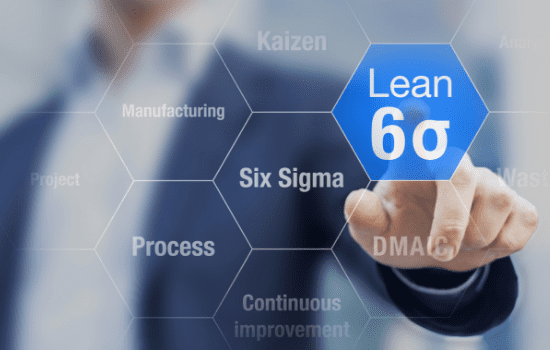A CPA Firm’s Lean Journey, Part Two: Implemenation
Originally published on March 12, 2014
Updated on February 2nd, 2024
John F. Kennedy once said, “Change is the law of life. And those who look only to the past or present are certain to miss the future”. Organizations must undergo change in order to improve. In this second article of a three-part series, we discuss how and why our Firm changed by implementing Lean Six Sigma.
Change is difficult for all companies, including our firm which has been around for 50 years! However, John F. Kennedy once said, “Change is the law of life. And those who look only to the past or present are certain to miss the future”. Although resisting change was always the easiest answer for our firm, we knew that companies who failed to evolve were ultimately left behind. With that being said, it was never a question of if we would change; it was always a question of when and how.
We took a major step forward by implementing Lean Six Sigma (LSS), and contrary to what some people might think – it is NOT the flavor of the month. LSS consists of taking a calculated and proven approach to analyzing and improving processes. Because of the level of strategic planning involved in the process, we quickly realized that it is imperative in any organization that top management be on board and committed, even if the final outcome is not immediately apparent.
Our first step was to ensure our partner group was engaged and committed to this approach. We initially discussed our plan with our executive committee, and then with our audit partners. The conversations were focused on first identifying our pains, and then educating on the Lean approach, and finally securing their buy-in. We are blessed with a great partner group that is willing to listen and is supportive of new endeavors. We found that by breaking this initial process into several steps, it was easier to obtain unanimous support amongst our partner group.
In order to ensure sustained continuous improvement, we also included training several individuals in LSS as green belts. Once the training was complete, we assembled our team for our improvement process. The team consisted of accounting and administration staff, managers, and partners across our three offices. I would like to emphasize how critical it is to engage experts at all levels in order to achieve true process improvement. For example, if only one group makes decisions and identifies problems, they will likely only see their view of the problem and inadvertently miss other angles.
We also engaged an outside consultant to train and facilitate our team. An outside facilitator helps keep the process moving, as it is easy to get bogged down with unimportant details or conversely miss something paramount.
After training and assembling the team, we mapped out our audit process in great detail in a value stream map. We also obtained data about the audit process – how long after fieldwork before financial statements were issued, overtime, personal preferences, and the list goes on.
We analyzed our processes step-by-step to identify areas of waste (things we became very familiar with during our training), and then developed solutions to improve these areas.
It is important to note there are a lot of discussions around best practices, and while those are important and play a role, any improvements made must fit the unique culture of the firm. Some of our improvements are extremely relevant for all firms, and other improvements were unique to our firm. It is not a one size fits all approach. The benefit of LSS is that it focuses on your own specific processes and identifies solutions for problems or wastes within these processes.
Finally, we developed new guidelines and processes and trained our people on the process. The shocker is that we’re not done! We’ll never be done. LSS is about continuous improvement. We empower our people to communicate issues or problems and we evaluate for potential improvement. LSS is about understanding value and eliminating anything that does not add value.
The next article will highlight some of our results and outcomes of this process improvement initiative. The impact has been significant and has permeated throughout our culture.
All content provided in this article is for informational purposes only. Matters discussed in this article are subject to change. For up-to-date information on this subject please contact a James Moore professional. James Moore will not be held responsible for any claim, loss, damage or inconvenience caused as a result of any information within these pages or any information accessed through this site.
Other Posts You Might Like

